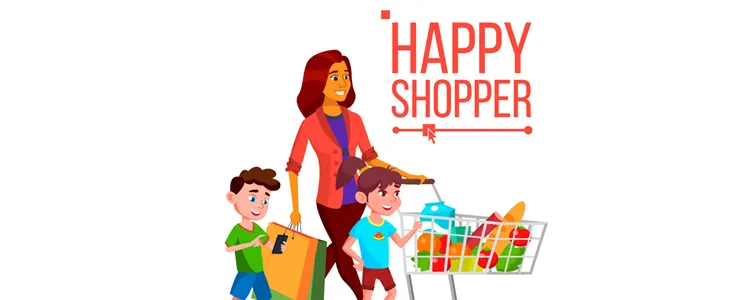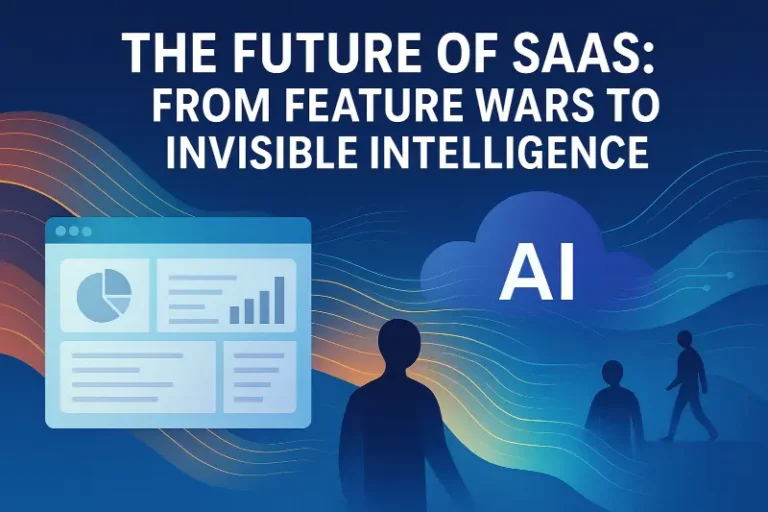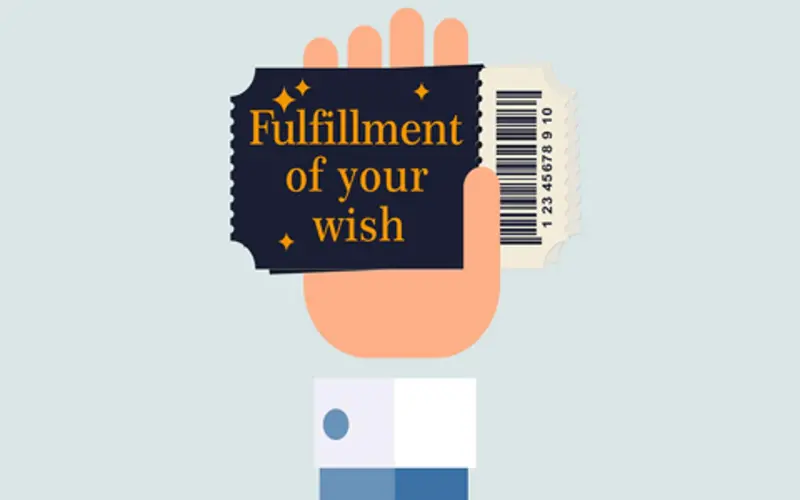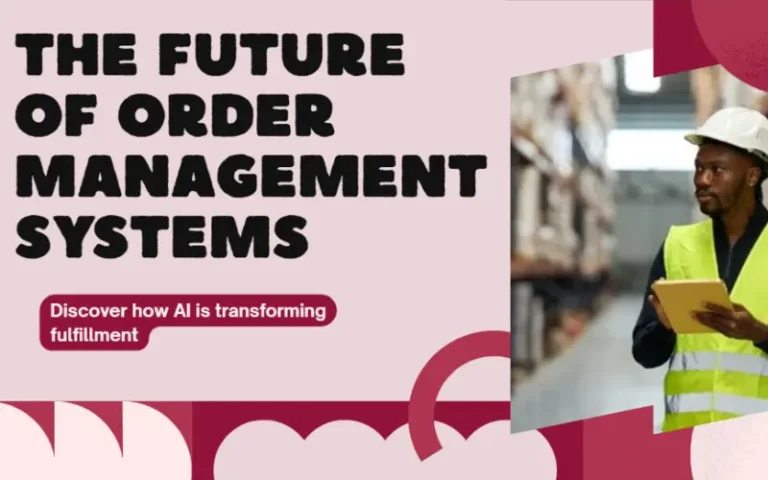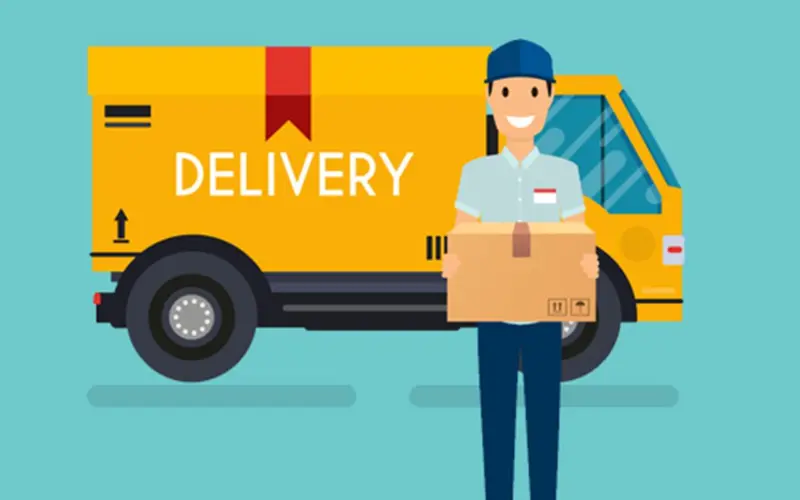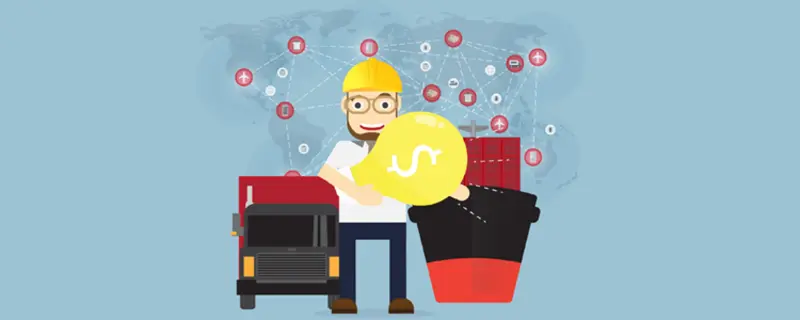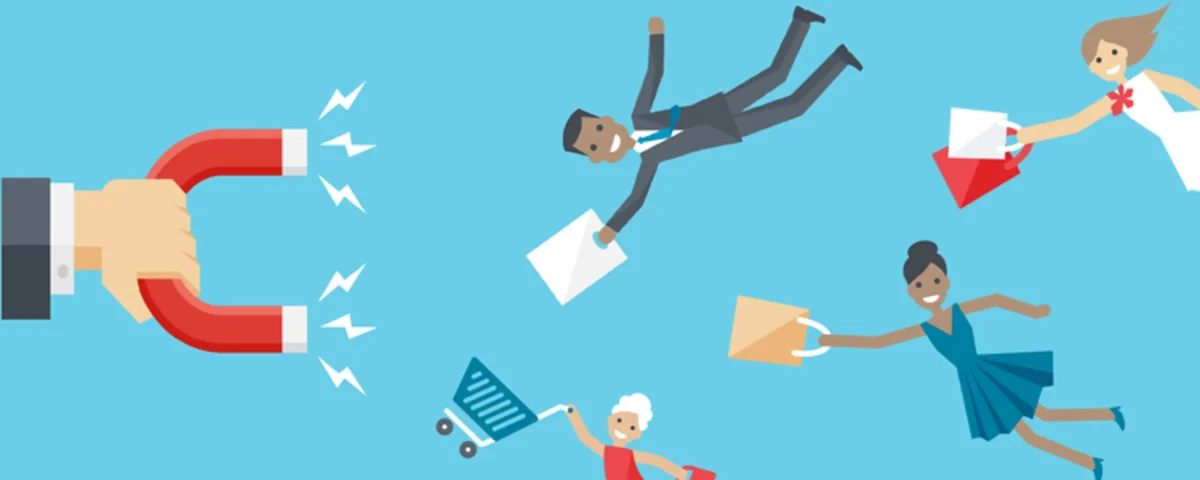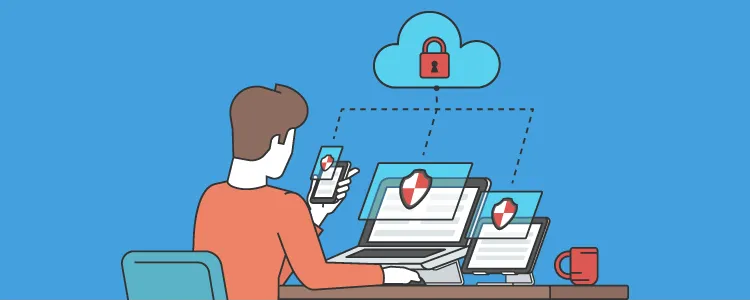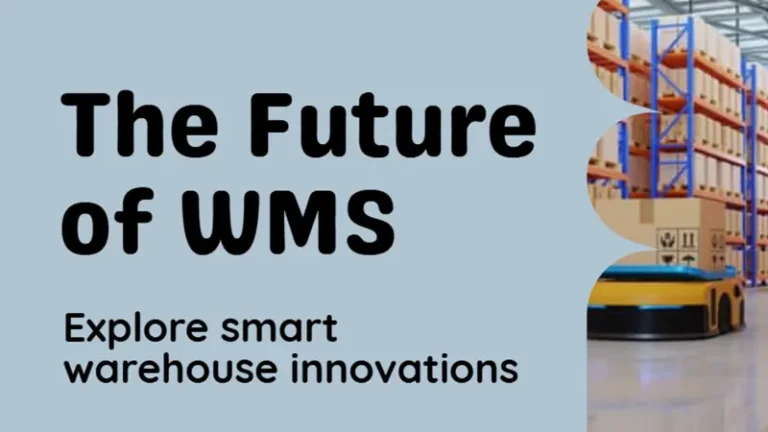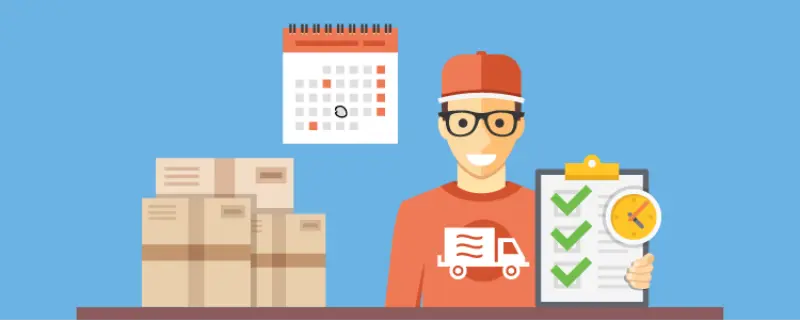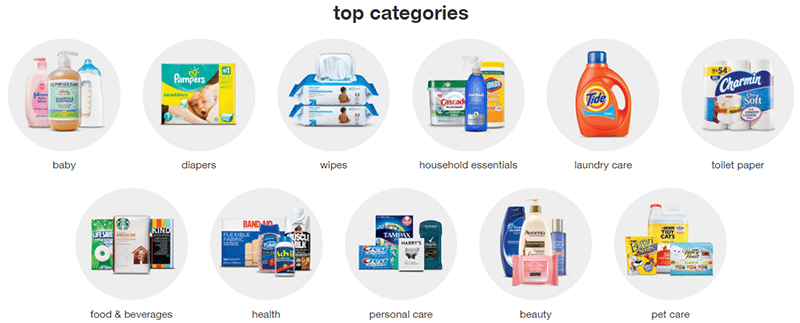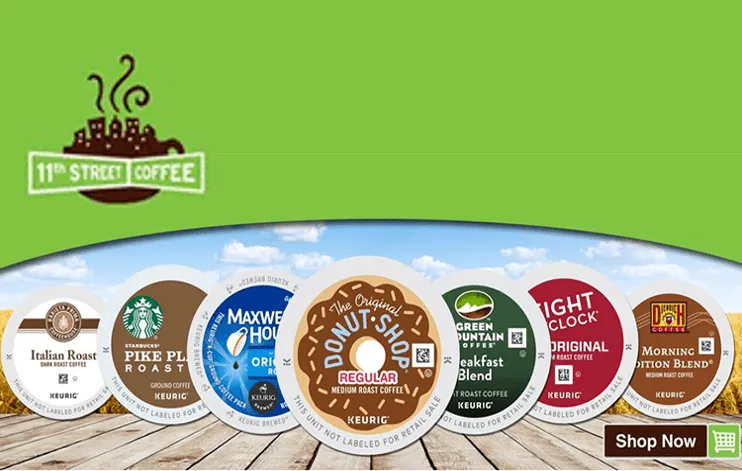Retailers Need a 360-degree Customer View to Win: Turning Today’s Smart Shoppers into Loyal Customers
Why Retailers Need a 360-degree Customer View to Win in the Omnichannel Age
Introduction
When you ring up a sale with a brand new customer, whether online or in a store, is that the end of the relationship? Or is it just the beginning? In her best-selling book “The Membership Economy,” Robbie Kellman Baxter makes a clear case for the latter. The economics are profound, as it costs 7x more to acquire a new customer than to earn a repeat visit.
Brand loyalty is the key to growth for almost all retail categories.
Whether your business relies heavily on repeat visits (e.g. sports apparel stores) or on low frequency purchases (e.g. a wedding reception decorations retailer), brand loyalty matters. You’d love for that soccer aficionado to shop every season. And you’d love for a recent bride to recommend your store, whether online or brick & mortar, to her friends when the time comes.
You build loyalty through great shopping experiences and customer touch points.
One hundred years ago, those experiences began in stores, through interactions with store associates. And they continued with ongoing personal relationships. People’s lives centered on relatively small geographic areas, and retailers learned about their customers in person. Today, we are a mobile society. Store associates aren’t lifetime employees, and loyal shoppers visit multiple locations of their favorite retailers, including online.
The proliferation of customer touch points during the past 20 years has been immense.
Meanwhile, your ability to truly know your customers, and how they interact with you, has become near impossible. Consider a shopper who just walked into one of your stores. Imagine if store associates knew the answers to all of these questions:
- Did she do any research before walking in? What products was she browsing?
- Has he shopped here previously? What did he buy and what brands does he like most?
- How happy was she with her last purchase here? Has she returned anything?
- Has he purchased from us online? Was it from our site? Or from a marketplace?
- Does she talk about our category, or about us, on social media?
- Have we interacted with him after the sale? Live chat? Contact Center? Chat bots?
Your customer is capable of remembering all of it. And increasingly, as shoppers, they expect you to remember too — to know them across all the touch points they’ve experienced with you. And while technology is the driver behind channel proliferation, technology has not kept up with your need to know about all of those new types of interactions as your customers move from your site, to your store, to the telephone contact center. And back to the store again.
Looking for a New 3PL? Start with this Free RFP Template
Cut weeks off your selection process. Avoid pitfalls. Get the only 3PL RFP checklist built for ecommerce brands, absolutely free.
Get My Free 3PL RFPIn this whitepaper, we will explore the challenges that retailers face in delivering omnichannel customer satisfaction as well as the solutions.
Turn Returns Into New Revenue
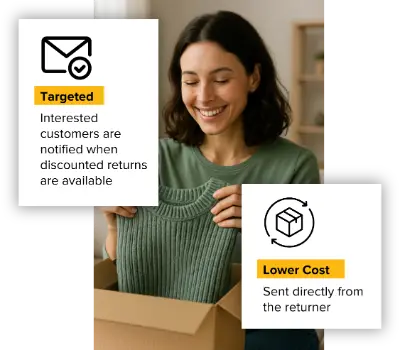
3 Strategies to Fulfill Like Amazon
If Amazon reduced shipping costs by just 1 percent, it would save $162 million. Amazon spent $16.2 billion on shipping in 2016. We can be certain that it is spending millions to improve and optimize its shipping processes. Ecommerce merchants can take advantage of Amazon’s efforts to increase profits.
Amazon’s 2016 shipping expense was 17.7 percent of direct ecommerce revenue. That’s $8.85 for every $50 order, which is achievable by most merchants.
This post, describes three strategies to fulfill like Amazon, even if you have a fraction of its scale and infrastructure
- Manage Carriers
- Manage Yourself
- More Choices, Urgency
Manage Carriers
Manage carrier contracts by the numbers. Negotiate better rates using data and analytics.
Analyze accessorial charges. These are extra fees assessed on top of the base rate. Compare every accessorial line item, by carrier, as a percentage of total shipping costs.
- Errors, such as address correction, return charge, and incorrect weight.
- Extra services, such as residential or rural delivery, remote area delivery, and Saturday delivery.
- Surcharges, including fuel charges, hazardous materials and international dangerous goods, and holiday season surcharges.
Analyze standard shipping fees for each cost driver.
- Distance, weight, volume.
- Size to weight ratio — e.g., dimensional weight surcharges for light (but big) items.
- Service level — e.g., next day air versus 5-day ground.
Negotiate like a pro.
- Focus on the accessorial fees that have hit you the hardest.
- Negotiate shipping fees with each carrier to match the lowest priced carrier for each category.
- Negotiate insurance fees with each carrier as well as with pure-play insurers.
Enforce each carrier’s service level agreement and negotiated prices.
- Validate that carrier bills are indeed reflecting your negotiated prices.
- File timely reimbursement claims for SLA violations — within 15 days, typically.
Automate intelligent carrier and service selection. In my experience, companies can save up to 25 percent on shipping costs from this strategy alone. No single carrier offers the best rates for every situation. The carrier that charges the least for an in-zone ground shipment may not be the one that charges the least for a 2-pound next day air delivery.
Create decision rules for choosing carriers and service types based on factors such as dimensional weight and delivery zone. Rather than attempting to cover every possibility, start by implementing the rules for 80 percent of your orders. Make sure to meet the minimum volume that you promised a carrier to secure your discounts and negotiated rates.
Implement these intelligent rules across all fulfillment centers and drop-ship vendors and then automate the selection process for your entire order management and warehouse management systems. Here are two examples.
- Geography-based rules. Shipper A charges the least for shipments from New York to Arizona while Shipper B charges the least for same-zone shipments.
- Weight-based rules. Shipper C charges the least for next-day air packages under two pounds.
Slash Your Fulfillment Costs by Up to 30%
Cut shipping expenses by 30% and boost profit with Cahoot's AI-optimized fulfillment services and modern tech —no overheads and no humans required!
I'm Interested in Saving Time and MoneyManage Yourself
Like Amazon, audit and analyze your own operations routinely to deliver orders faster and cheaper. This may seem obvious, but many mid-market retailers lack the technology and infrastructure. Your ecommerce systems should facilitate automated rules, in addition to answering the following questions:
- Which products are generating the highest discrepancies between the shipping fee invoiced to the customer versus what’s charged by the carrier?
- What is the best carrier for each product, order size, and geography?
- Which shipments resulted in missed carrier SLAs or actionable exceptions?
Eliminate costly errors. Accessorial charges are typically the result of errors. According to Refund Logistics, 31 percent of carriers’ invoices include these extra fees, on average. Common errors and resulting fees include:
- Incorrect address, resulting in address correction and return fees.
- Incorrect dimensions and weight, resulting in DIM charges, which can be eliminated by ensuring product catalog data is accurate.
Intelligent order routing. Route orders to the fulfillment center(s) closest to the customer.
- Ship faster and reduce shipping costs up to 25 percent.
- Pick the least expensive shipping type that gets the package to its destination within the promised delivery date commitment.
Go omnichannel. If you’re an ecommerce merchant with physical stores, leverage those stores as fulfillment centers.
- Ship from store. Shipping from stores can reduce shipping costs and speed up delivery. For example, Best Buy reduced average shipping time by two days with its ship from store program. Revenue may increase, too, with this strategy. American Apparel reported a 30 percent increase in sales from using stores as backup fulfillment centers.
- Buy online, pick up in-store. Offer pickup in-store as a delivery option for online customers. It eliminates shipping fees and increases customer satisfaction. Plus, customers spend an additional 20 percent, on average, when picking up their items.
Looking for a New 3PL? Start with this Free RFP Template
Cut weeks off your selection process. Avoid pitfalls. Get the only 3PL RFP checklist built for ecommerce brands, absolutely free.
Get My Free 3PL RFPMore Choices, Urgency
Offer more choices. Increase conversions by giving customers delivery options that provide greater certainty of delivery times. For example, Amazon offers these shipping choices:
- “Tuesday, Sept. 12: $5.99 One-Day Shipping.”
- “Wednesday, Sept. 13: Free Two-Day Shipping.”
- “Friday, Sept. 15: Free No-Rush Shipping + Get $5 Reward for Prime Pantry.”
Create urgency to increase conversions. On your product details, shopping cart, and checkout screens, show how much time is remaining to complete the order and still receive guaranteed delivery by the desired date.
If you are already implementing these techniques and are looking for more tips and tricks, check out this comprehensive guide to profitable free shipping

Turn Returns Into New Revenue

5 Ways to Improve the Parcel Delivery Experience
“The last mile” is now the Holy Grail of ecommerce shipping. A merchant can do an amazing job of selling and provide an outstanding shopping experience, yet if the package is late or damaged, a customer may complain on social media, even if the carrier is to blame.
You can’t directly control the last mile — i.e., the distance from a local transportation hub to the final destination — but you can improve the communication with your customer to provide excellent service, even when things go wrong.
Here are a few ways that merchants can provide an outstanding delivery experience and produce a positive brand impression.
5 Ways to Improve the Parcel Delivery Experience
1. Avoid porch pirates. Porch pirates are thieves that steal parcels from recipients’ porches. Many articles have been written about how to prevent this type of theft. Ideas include security cameras, lockers, and services like Package Guard, which notifies a recipient when a package is delivered.
But the most foolproof way to avoid theft is to ensure that the customer is home when the parcel arrives. Retailers can schedule delivery times and provide frequent delivery notifications (see 3., below), so consumers know when to be home. Saturday delivery options provide even more opportunities to stop package theft.
2. Provide delivery windows, with options. Customers expect tight delivery windows — ideally, 8 a.m. to 12 p.m. on a specific day, with notification an hour or so before delivery. Provide the ability for your customers to choose a delivery date and, if possible, a time.
Even better, empower them with different ways to receive packages. For example, Jet.com is installing Latch, a sophisticated access system, in 1,000 New York City apartment buildings for easier deliveries. Residents can use their phone as a key, grant access to guests without walking downstairs, and get packages delivered safely without being home.
Also, Amazon Locker is available to merchants using Fulfillment by Amazon. It is similar to a post office box, but only for Amazon deliveries. Customers get an email as soon as the package arrives at the locker and they have three days to pick it up. Similar services include FedEx Ship&Get, USPS Gopost, and UPS Access Point lockers.
Amazon is also testing delivering directly to customers’ car trunks, while Walmart is testing deliveries straight to customers’ refrigerators. Commitment to improving the last mile experience is immense. Independent merchants should not be too far behind.
Slash Your Fulfillment Costs by Up to 30%
Cut shipping expenses by 30% and boost profit with Cahoot's AI-optimized fulfillment services and modern tech —no overheads and no humans required!
I'm Interested in Saving Time and Money3. Send frequent delivery notifications via preferred mediums. Customers have their own preferred forms of communication. The more choices they have, the more likely they are to receive and read your updates. The top three consumer choices for communication are typically email, text message, and a company order-tracking page. As a start, offer all three.
Customers appreciate being notified when an order is going to ship, when it has shipped, where the item is currently located, and ongoing updates about the expected delivery date and time.
There are plenty of exceptions to these typical notices. You’ll earn loyalty points with your customers if you handle them well, and proactively. Examples include:
- Attempted delivery by the carrier, without success.
- Available for pickup at a carrier location, after too many attempted deliveries.
- Cannot schedule a delivery appointment, and the carrier is unable to reach the customer.
- Consignee refused delivery, usually because it was delivered to the wrong address.
- Other exceptions, including expected delays, package held at terminal, and incorrect address.
4. Provide a branded tracking page. A branded delivery-tracking page is a must have. Customers become increasingly engaged with your brand during the period between the purchase and delivery. According to the 2017 “Post-Purchase Benchmark Report” from Navar, a customer loyalty and retention platform:
- Those who track orders visit the tracking page 3.1 times per order.
- The click rate on marketing assets that appear on a branded order-tracking page is 3-times higher than for marketing emails
A branded tracking page will curtail “Where is my order?” customer-service queries. It will also provide your marketing team with better opportunities to cross sell, up sell, and boost engagement.
5. Offer branded and eco-friendly packaging. Branded packaging is a effective way to advertise. It’s similar to a mobile billboard. Remember the first time you saw a package from Jet.com? Or the ubiquitous Echo and Prime advertisements on every Amazon box? The more eye-catching your packaging is, the more your customers and their neighbors will remember it.
Eco-friendly packaging is becoming more important, especially for millennials. One recent study found that more than 50 percent of shoppers would pay more for environmentally friendly packaging.
Looking for a New 3PL? Start with this Free RFP Template
Cut weeks off your selection process. Avoid pitfalls. Get the only 3PL RFP checklist built for ecommerce brands, absolutely free.
Get My Free 3PL RFPExecution Is Key
Parcel delivery strategies are easy to articulate, but hard to execute well. Managing delivery in the last mile requires infrastructure for order and fulfillment that can track real-time package status from origin to the customer’s doorstep and everywhere in between. That information must sync with numerous platforms — website, customer support, email, text messages — and accommodate order and delivery modifications. Get it all right and you’ll have an unfair competitive advantage.

Turn Returns Into New Revenue

7 Ways Retailers Can Make Free Shipping Profitable
One of the most important and potentially expensive decisions that an online retailer can make is whether or not to offer free shipping. Over 2 million Google searches each month in the United States include the phrase “free shipping.” Most online merchants have at least considered offering it. It’s a tough decision because shipping is expensive — Amazon’s shipping expense was $16.2 billion in 2016, over 17 percent of its total order value.
How can a retailer afford an additional 15 to 20 percent expense?
The good news is that you can.
Begin with a simple A/B test, in which a random sample of shoppers — 10 to 50 percent — is offered free shipping. Compare the control group with the test group to see the change.
Then, track three outcomes to determine the real cost of offering free shipping.
- Change in conversion rate. For example, a change from 5 percent to 6 percent is a 20 percent increase, or 1.2 expressed as a decimal. In the equation below, it’s variable A.
- Change in average order value. An AOV improvement from $50 to $51 is a 2 percent increase, or 1.02 expressed as a decimal — variable B, below.
- Change in gross margins. If the control group gross margin is 50 percent, and the test group gross margin is 35 percent, then the gross margin decrease is 30 percent: -15% ÷ 50% = -30%.This is -0.3 expressed as a decimal. It’s variable C, below.
Slash Your Fulfillment Costs by Up to 30%
Cut shipping expenses by 30% and boost profit with Cahoot's AI-optimized fulfillment services and modern tech —no overheads and no humans required!
I'm Interested in Saving Time and MoneyNext, compute the percentage change in profit from offering free shipping, as follows.
% Change in profit (x) = [(A * B * (1+ C)) – 1] * 100
x = [(1.2 * 1.02 * (1 + (-0.3))) – 1] * 100
x = -14.3%
The change in profit from free shipping in this case is -14.3 percent.
What follows are seven strategies and tactics to turn free shipping from a -14.3 percent cost center into a profit increase.
7 Ways to Profit from Free Shipping
Set minimum order value. By adding a minimum threshold for free shipping, you can increase AOV because shoppers will have an incentive to increase basket size. You can also reduce the negative impact on margins because free shipping will be offered on fewer orders, and thus reduce situations where shipping cost represents more than 20 percent of the total order value.
Step 1: Choose a threshold. A good starting point is to add 10 to 15 percent to your current AOV. For example, if AOV is $50, offer free shipping on orders over $55
Step 2: Run the A/B test again. Your results could look like this:
- Conversion rate increased from 5 percent to 5.5 percent — 1.1, variable A.
- AOV increased from $50 to $57.50 — 1.15, variable B.
- Gross margin declined from 50 percent to 43 percent — -.14, variable C.
Now, the change in profit from free shipping is +8.8 percent:
% Change in profit (x) = [(A * B * (1+ C)) – 1] * 100
x = [(1.1 * 1.15 * (1 + (-0.14))) – 1] *100
x = 8.8%
Step 3: Supersize it. Adding a minimum of $55 for free shipping increases profit by 8.8 percent. Thus, we should heavily promote it. Here are three ideas.
- “You almost qualify.” When shoppers add an item to the cart, inform them how much more they need to spend to qualify for free shipping
- “Take advantage of your free shipping.” Once free shipping is earned, remind shoppers that they can take advantage of the free shipping to buy more.
- “Look how much you saved!” Remind shoppers at checkout how much money they are saving with free shipping
Looking for a New 3PL? Start with this Free RFP Template
Cut weeks off your selection process. Avoid pitfalls. Get the only 3PL RFP checklist built for ecommerce brands, absolutely free.
Get My Free 3PL RFPUse only ground shipping. Change the equation by offering free shipping only via your least expensive shipping option, such as USPS Flat Rate Boxes or UPS Mail Innovations. The promotion for this could be: “Free economy shipping on orders of $55 or more.”
According to 2017 survey by Internet Retailer and Bizrate Insights, nearly 90 percent of online shoppers say they are willing to wait longer for delivery of an order in exchange for free shipping. Most shoppers are likely to choose the free shipping option.
By using only ground shipping, you could cut your free shipping expense by more than half.
Offer low flat-rate shipping. Offer a flat-rate shipping charge on all orders. Amazon Prime Pantry does this well by leveraging consumer psychology to drive basket sizes up.
This approach has many advantages. Customers cover shipping expense on smaller, lower margin orders. Shoppers are incented to buy more, since additional items ship for free. As the order size increases, overall gross margin goes up, covering the incremental shipping cost.
Include shipping costs in product prices. Consider the effect on conversion rates from these two offers:
- Option 1: $30 + $5 shipping charge.
- Option 2: $35 with free shipping.
Bill D’Alessandro, of Rebel CEO, a consulting firm, ran this very test for a skincare product. The conversion rate for option 2 was twice that of option 1. This approach can work well for items that are unique and hard to price shop across multiple sites.
How do you include shipping costs in item prices? One approach is to change the pricing of items below the free shipping threshold to include a portion of expected shipping cost.
Say a merchant offers free shipping for orders of $75 or more. For a $25 item, add 33 percent ($25/$75) of the shipping cost to the item price. For a $10 item, add 13 percent ($10/$75) of the shipping cost to the item price.
The $25 item would now be offered at $28. The $10 item now has a price of $11.30. You still offer free shipping, but you’ll recoup a portion of the costs. Customers may prefer to pay $11.30 with free shipping versus $10 with $1.30 shipping.
Exclude items from free shipping. Reduce the negative margin impact of free shipping by:
- Offering free shipping only on high volume items with low shipping costs.
- Excluding low margin items from free shipping altogether.
- Excluding heavy and bulky items with high shipping costs from free shipping.
Scaling Made Easy: Calis Books’ Fulfillment Journey
Learn how Calis Books expanded nationwide, reduced errors, grew sales while cutting headcount, and saved BIG with Cahoot
See Scale JourneySubstitute service types. If you are offering free ground shipping, and charging an additional fee for expedited 2-day shipping, avoid displaying on your website the carrier name and specific service type that you intend to use.
In many cases, you’ll be able to use economical ground shipping to meet even the 2-day shipping requirements for expedited orders. For deliveries in close proximity to your distribution centers and drop shippers, for example, you can ship using the cheapest ground option and still meet the delivery window for some of your expedited 2-day orders and pocket the savings.
Sell via Amazon Prime and FBA. Gain access to over half of U.S. households by offering select products through Amazon Prime while using Fulfillment by Amazon to cut fulfillment costs. While FBA is certainly not free for merchants, some find that the efficiencies and volume gained through Amazon Prime and FBA can cover the cost of free shipping.
Not a Cash Sink
In short, free shipping doesn’t have to be a cash sink. Smart retailers of all sizes use free shipping as a lever to increase conversions and average order values while minimizing its negative impact on profits.
Moreover, free shipping can also reduce customer service costs for returns. Customers often request to be reimbursed for shipping when returning an item. But there’s nothing to reimburse on free shipping!
For more than 40 ways to reduce your shipping costs and be profitable, check out this ultimate guide to profitable free shipping.

Turn Returns Into New Revenue

7 Ways to Turn Post-Purchase Interactions into New Sales
Most retailers put a lot of time and effort into attracting new customers. It makes sense: you need customers to buy your products and sustain your business. However, generating more sales from existing customers is a more efficient, less expensive way to grow.
The probability of selling to an existing customer is 60 percent to 70 percent, compared with the 5 percent to 20 percent chance of selling to a new customer, according to the White House Office of Consumer Affairs.
Slash Your Fulfillment Costs by Up to 30%
Cut shipping expenses by 30% and boost profit with Cahoot's AI-optimized fulfillment services and modern tech —no overheads and no humans required!
I'm Interested in Saving Time and MoneyEvery dollar spent retaining or reselling goes further than one spent to attract new customers.
I invite you to reconsider the post-purchase customer as a prospect for continued, expanded business. In many ways, they’re an ideal prospect — you know what products they like, you know that they like your brand, and you have their trust.
Existing customers are also a great source of new prospects: 42 percent of online customers find recommendations from friends and family influential, and 23 percent are influenced by social media recommendations, according to BigCommerce’s Consumer Shopping Habits Study.
7 Ways to Turn Post-Purchase Interactions Into New Sales
The moment a customer completes a purchase, you should think of them as a new prospect, with opportunities for add-ons and additional sales on the horizon. Each interaction is an opportunity for more sales, more revenue per purchase, and more referrals.
1. Make good use of your order tracking page.
Between purchase and delivery, customers who track their orders visit the order tracking page an average of 3.1 times per order, according to the 2017 Narvar Post-Purchase Benchmark. They’re also three times more likely to click through a marketing asset on that page than a regular marketing email. Customers who visit the tracking page are excited about your products. Make good use of that prime real estate with targeted ads for products that would complement their recent purchase.
2. Answer their questions.
This might seem straightforward, but too many retailers are missing this crucial foundation. After purchase, customers expect you to be just as helpful as when you were trying to close the sale. At the simplest level, your website needs an easy-to-find FAQ about topics like shipping, refunds and exchanges.
Ideally, customers should be able to get an answer via any channel: phone, live chat, email, social media, or even in-store. According to Parature, 43 percent of customers cite being passed from agent to agent as a top aspect of bad customer service. Getting this right requires an an omnichannel order management system (OMS) that centralizes information for every agent. A customer standing in your store doesn’t want to hear that they have to call the 800 number, and now they won’t have to.
Looking for a New 3PL? Start with this Free RFP Template
Cut weeks off your selection process. Avoid pitfalls. Get the only 3PL RFP checklist built for ecommerce brands, absolutely free.
Get My Free 3PL RFP3. Order modifications: anywhere, anytime.
With the advent of sophisticated order fulfillment software, customers expect you to locate and modify their order right up until the moment it ships. Order management software can solve this challenge, integrated with OMS so that service representatives don’t have to call the warehouse to make changes.
It’s a worthwhile investment. When customers can modify their order, they’re more likely to buy add-ons, knowing that their products will arrive together. You also save on refunds and exchanges by eliminating shipping products that customers don’t want. Finally, you enhance your relationship with customers, who trust you to get them exactly what they want.
4. Provide smooth and easy returns.
Returns are unavoidable. According to the marketing experts at Invesp, 30 percent of products purchased online are returned. A full 35 percent of those returns aren’t due to any error, but just because a customer decided not to keep the item. Turn this potentially negative situation into an opportunity by delivering an outstanding, frictionless experience.
Customers want to return or exchange a product via any channel, not just the one where it was purchased. If they bring a sweater they purchased online into their local store, a store employee should be able to process the exchange, then delight the customer by offering the replacement item for pickup or quick shipment. An OMS makes this possible by centralizing all orders, inventory, fulfillment and returns.
5. Make it personal.
Once a customer purchases from your brand, you suddenly have an enormous marketing advantage: you know what they like. Fifty-nine percent of shoppers want personalized marketing online, including special offers, exclusive coupons or advertising for products they’re interested in, according to the Accenture Personalization Survey. Use what you know to market related products via email, direct mail, social media and other channels, and start soon after purchase while your brand is top of mind.
6. Don’t forget the packaging.
Let’s say that 20 percent of your customers open each of your marketing emails — pretty good! How many open the package that contains their order? More like 100 percent. Packing materials are an excellent marketing asset, and not to be overlooked.
Beyond the baseline — delivering the order on-time, complete and undamaged — you can delight customers with enclosed free samples or discount offers. Then make it easy for them to follow up. Set up a special short URL for the offer so they can place their order quickly while they’ve got it on their mind.
7. Get the most out of happy customers.
Loyal customers don’t only bring additional revenue, they can also bring in new customers. Consider implementing NPS, the simple survey that asks customers, “How likely are you to recommend this company to a friend?” Identify happy customers, then follow through: offer referral perks or encourage them to share their favorite products on social media.
Scaling Made Easy: Calis Books’ Fulfillment Journey
Learn how Calis Books expanded nationwide, reduced errors, grew sales while cutting headcount, and saved BIG with Cahoot
See Scale JourneyLoyalty programs are another great option, although they can be complex to administer. According to Accenture, members of loyalty programs generate 12 percent to 18 percent more revenue than customers who aren’t members. Loyalty programs keep customers actively engaged and drive repeat purchases, social media buzz and new referrals.
Conclusion
Getting the most out of your post-purchase customer interactions has two major parts: a well-designed and well-executed marketing strategy, and an omnichannel delivery and service commitment. Both pieces are necessary to drive higher customer retention, loyalty and referrals, and overall revenue. Businesses that adopt omnichannel strategies achieve over 90 percent greater year-over-year customer retention rates compared to those that don’t.

Turn Returns Into New Revenue

[Webinar] Prep for Holiday Fraud in Online Apparel and Accessories
There are two types of ecommerce businesses:
- Those that have been hit by fraud
- Those that will be hit by fraud
Slash Your Fulfillment Costs by Up to 30%
Cut shipping expenses by 30% and boost profit with Cahoot's AI-optimized fulfillment services and modern tech —no overheads and no humans required!
I'm Interested in Saving Time and MoneyAttend this webinar for a 30-minute discussion about the trends, tactics and strategies online fashion and apparel merchants may see during the holiday season. Hear from merchants that have found success in fraud mitigation and prevention and other industry experts as we discuss:
- Ecommerce trends specific to online apparel and accessories merchants
- Techniques to accept more orders during the holidays
- How to reduce fraud losses without negatively affecting sales
- Managing the fraud and risk process with efficiency
Moderator

Derek Jones
Sales Executive, Kount
Panelists

Manish Chowdhary
CEO, Pulse Commerce

Tannis Anderson
Warehouse Manager, Soccerpro.com

Turn Returns Into New Revenue

Why Online Retailers Must Offer Date-Certain Shipping This Holiday Season
In this article
 6 minutes
6 minutes
- Act now to reduce your accessorial charges and return rates
- Deterministic shipping can help you improve customer service too
- Upgrade your customer experience and brand perception this holiday season
- Act fast and implement these strategies to claim your holiday gift early
- How to go about implementing these strategies and tactics
- An Order Management System (OMS) with robust integration can
We have come a long way on the journey from the Pony Express to Federal Express
From: “I wonder if the courier died?”
|
To: “FedEx received the Package”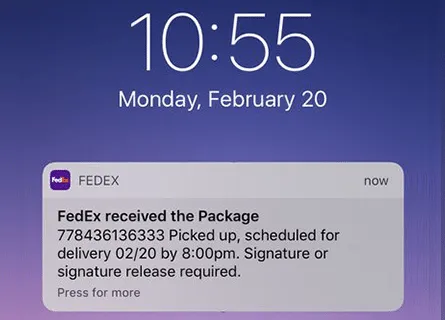
|
FedEx, UPS, and even the US Postal Service, provide their customers with real-time shipment updates. They also give merchants access to many shipping service types – next day, 2-day, 3-day, ground, and more.
Similarly, online retailers can and should offer choices to their customers. For example, Amazon gives customers multiple date-certain delivery choices, also known as Date-Certain Shipping or Deterministic Shipping, leaving those who don’t at a competitive disadvantage.
Over 65 million Amazon Prime members are presented with these options, and an increasing number of fast followers are adopting similar strategies, leaving those who don’t at a competitive disadvantage.
Slash Your Fulfillment Costs by Up to 30%
Cut shipping expenses by 30% and boost profit with Cahoot's AI-optimized fulfillment services and modern tech —no overheads and no humans required!
I'm Interested in Saving Time and MoneyAt Pulse Commerce, we believe that Amazon has made date-certain shipping an ecommerce imperative. Merchants who offer deterministic shipping, especially during the holidays, will enjoy higher conversion rates and sales than those who do not.
Given that Amazon spent $16.2 Billion on shipping expenses in 2016 alone, we can be certain that it has cracked the shopping cart conversion code better than anyone else, especially when it comes to shipping and fulfillment.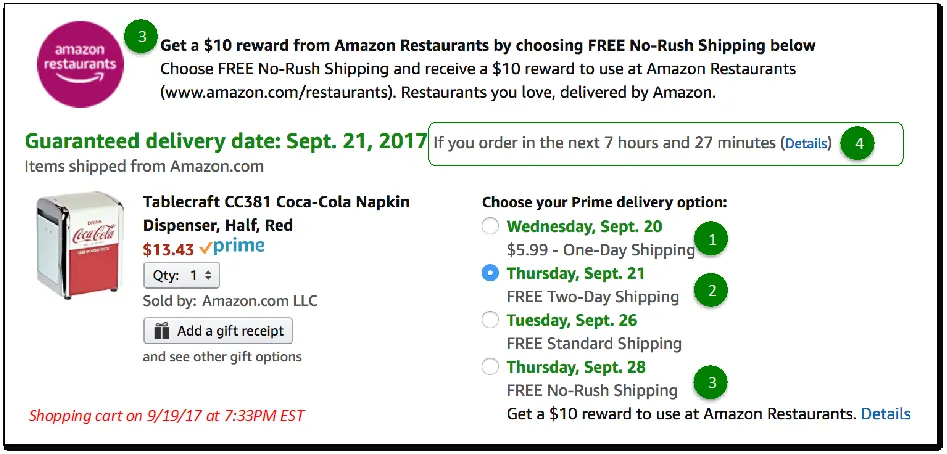
Let’s examine this shopping cart (see Figure 1), observe the tactics being used, and consider their impact on both consumers and the merchant:
- Choices increase conversion: This Amazon Prime customer is presented with four choices; including (1) receive tomorrow for an additional $5.99 and (2) receive in 2 days at no charge. According to a Metapack study, 61% of customers bought goods from one retailer over another because they provided more delivery options.
- Customer incentives reduce shipping expense: If a customer chooses option (3) FREE No-Rush Shipping, they receive $10 towards Amazon Restaurants. Amazon regularly offers its customers incentives to help cut down its massive $16.2B shipping expense. This offer is not random – it’s part of a broader strategy to attract new users to Amazon Restaurants. Take a trip to Amazon Restaurants, and here’s the first thing we see:
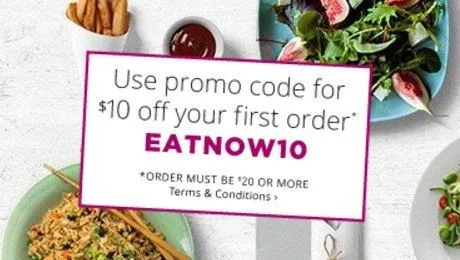
- Urgency increases conversion: Look at option (4) in the illustration above. The customer is guaranteed delivery by September 21 (2 days) if she purchases in the next 7 hours 27 minutes. As the customer is looking at their cart, that clock is ticking down, second-by-second, shouting “buy me now if you need me by Thursday!”
This simple cart message increases conversion by giving clear and specific choices and creating a sense of urgency. It also reduces shipping expenses for the merchant by rewarding customers who choose the least expensive shipping option.
Act now to reduce your accessorial charges and return rates
By giving Date-Certain Shipping options, Amazon is reducing a few of their accessorial charges (surcharges imposed by the carriers) as well. Choosing a delivery date reduces the number of unsuccessful deliveries, which reduces Delivery Reattempt fees and expenses.
Looking for a New 3PL? Start with this Free RFP Template
Cut weeks off your selection process. Avoid pitfalls. Get the only 3PL RFP checklist built for ecommerce brands, absolutely free.
Get My Free 3PL RFPWhen customers know when the package will arrive at the time of ordering, they know when to expect the package. They are not disappointed as long as the delivery date commitment is met. This minimizes the number of returns from the customer due to shipping related uncertainty.
Deterministic shipping can help you improve customer service too
Timely and accurate delivery status updates reduce Where is My Order (WISMO) customer service calls, especially during the holiday surge.
- Where Is My Order customer service requests can generate upwards of 70% of all customer inquiries during the holidays (source: getelastic).
- Frequent and easily available updates can cut WISMO calls by 50% or more.
- You can reduce overall customer inquiries by 10% to 30%, freeing up CSRs to respond to inquiries that require their expertise.
Upgrade your customer experience and brand perception this holiday season
![]()
If carriers can provide real-time status updates on their websites, then you can for your customers too – online, and via app notification, email and SMS.
- Provide a branded order tracking page and include links to it on all prominent pages
- Provide a link to online package tracking in your shipping notification emails
- Send an email to the customer when the order is in-transit, out for delivery and when it’s delivered
- Display a “where is my order” link on your customer service page
- Over-communicate delivery timeframes – include estimated delivery dates info on all relevant emails and web pages
Scaling Made Easy: Calis Books’ Fulfillment Journey
Learn how Calis Books expanded nationwide, reduced errors, grew sales while cutting headcount, and saved BIG with Cahoot
See Scale JourneyAct fast and implement these strategies to claim your holiday gift early
We’ve outlined several initiatives that can increase holiday conversions and customer satisfaction while reducing shipping costs. You must invest early to bring these initiatives to life, so you can maximize your ROI this holiday season.
- Provide date-certain shipping choices on product details and shopping cart pages (i.e. deterministic shipping) to increase conversion
- Create urgency to order now (to receive by specific date) to increase conversion
- Reward customers for choosing later delivery to reduce Shipping Expense
- Provide frequent and prominent order tracking updates on your website and through email to reduce WISMO calls, increase satisfaction, and lower customer service costs
How to go about implementing these strategies and tactics
The answer lies in technology. Modern order management software, like Pulse Commerce’s, that has deep real-time integration with shipping carriers like UPS, USPS, FedEx, etc. can easily enable date-certain shipping for merchants.
You might consider integrating directly using each carrier’s API. While shipment tracking information is crucial, that’s not all. You also need accurate, real-time information on:
- Item fulfillment (i.e. is the item in stock)
- Which warehouse or store will the item ship from
- The cut-off time for order processing by sales channel and fulfillment location before it’s picked, packed and scheduled for UPS or FedEx to pick up.
Most if not all this information typically resides in an order management system, which may also house the product catalog and inventory data.
An Order Management System (OMS) with robust integration can:
- Integrate with all popular shipping carriers and ecommerce platforms, reducing complexity.
- Track orders from source to customer’s doorstep, and provide proactive alerts on exceptions.
- Enable you to expose this information to customers through many formats: (1) automated email and SMS notifications; and (2) real-time branded tracking on website or mobile apps.
An OMS does much more, including intelligent order routing to turn orders around faster while optimizing inventory. You can learn more about the broad role that an OMS plays in the enterprise, by reading this article on Order Management Essentials.

Turn Returns Into New Revenue

How to Increase Online Conversions with Dynamic Imaging [Webinar]
In this article
 2 minutes
2 minutes
If you’re an online retailer who sells custom products, then you know how hard it is to boost online conversion rates and reduce returns. Customers are unsure what the final product will look like. And if it doesn’t meet expectations, returns and dissatisfied customers are likely.
Dynamic imaging helps retailers improve online conversions and reduce returns
- Customers preview their customized products (e.g. imprint, engraving, embroidery, etc.), increasing conversions.
- Products are more likely to match a computer image than a mental image, so returns are lower.
View our on-demand webinar to learn:
- What is dynamic imaging? And why is it important for converting online shoppers into buyers?
- What are the types of Dynamic imaging? What are the differences between Production Imaging and Customization Imaging. Which ones make sense in which situations?
- Dynamic Imaging Retailer Case Study: How a mid-market specialty gifts retailer increased conversions with dynamic imaging?
- Benefits to Your Business: How can you give your customers the best shopping experience that leads to more sales and less abandoned carts?

Turn Returns Into New Revenue

How Mid-Market Merchants Increase Profits with Subscriptions and Continuity Programs
In this article
 4 minutes
4 minutes
What Every Merchant Wants
Every merchant wants to:
- Convert first time shoppers into loyal customers
- Increase the lifetime value of their customers (CLTV)
- Reduce customer acquisition costs as a percentage of CLTV
The most direct way to gain repeat business is for customers to subscribe to ongoing purchases of your products.
There is no better or easier way to increase customer lifetime value than to have a customer subscribe to recurring monthly or quarterly purchases.
- Would you rather sell a single $31 box of diapers? Or 12 boxes at $28 each?
- Would you rather have a predictable revenue stream, or choppy ups and downs in order volume?
Slash Your Fulfillment Costs by Up to 30%
Cut shipping expenses by 30% and boost profit with Cahoot's AI-optimized fulfillment services and modern tech —no overheads and no humans required!
I'm Interested in Saving Time and MoneyPopularity of Subscriptions is Growing
Retailers and B2B merchants have caught on to subscription magic, and recent growth in subscription and membership commerce has been tremendous:
- Subscribe and Save
Dozens of retailers offer subscribe and save options for consumer and business staples – e.g. monthly diaper, coffee, or office supplies deliveries. Amazon offers the service in 28 categories, and also enables its FBA merchants to offer Subscribe and Save for their products.
20% of Sales from Subscribe & Save
Puracy is an Austin-based company offering natural personal-car products. In just one year, Subscribe & Save has become 20% of their annual revenue. Subscribe & Save has helped lower their user acquisition costs, provided reliable business, and expanded their brand. The best part about it? “It’s business you can count on.” Source: Amazon
- Monthly Box Clubs
My Subscription Addiction lists over 2,000 “of the month” clubs. Visits to subscription box websites grew by over 3,000% in a 3 year period, up from 722,000 visits in 2013 to 21.4 million in 2016 – Source: Inc. Magazine
Retailer Benefits from Ecommerce Subscription and Continuity Programs
The benefits are clear, yet it’s worth recounting them.
-
Higher Lifetime Customer Value. Consider a coffee services company that sells to businesses.
- A portion of annual revenue is locked in and stable.
- Their customers don’t have to think about coffee re-ordering or shipments.
- Coffee and supplies won’t run out, so their customers won’t need to even think about purchasing from a competitor
- The merchant has more opportunities to engage with its customers. According to Narvar’s March 2017 post-purchase benchmark, the click-through-rate on marketing assets that appear on a branded order-tracking page is 3x higher than for marketing emails.
-
Lower Customer Acquisition Costs
- The more repeat customers you have, the lower your overall new customer acquisition costs will be as a % of total sales.
- Loyal customers will refer new customers to your business, further lowering total customer acquisition costs.
-
Better Inventory Forecasting and Management
The portion of inventory dedicated to subscribe and save customers has close to a 100% likelihood of being sold and shipped. Therefore, a known proportion of inventory will have the highest possible inventory turns, reducing overall inventory costs as a percentage of sales, and yielding a higher return on capital.
Looking for a New 3PL? Start with this Free RFP Template
Cut weeks off your selection process. Avoid pitfalls. Get the only 3PL RFP checklist built for ecommerce brands, absolutely free.
Get My Free 3PL RFPIdeal Products for Subscriptions and Continuity
Typical subscription products share a handful of characteristics:
- The items “run out” or get “used up” in a predictable time frame.
Batteries, diapers, socks, water and air filters, office printer ink, coffee, and home cleaning products all get worn out or used up on a fairly predictable basis. - Running out is an inconvenience.
You want batteries when the remote control dies. Running out of diapers is… messy.- Health, household & baby care: Diapers and detergents
- Beauty and Personal Care: Razors, hygiene products and soaps
- Automotive parts: Filters, cleaning cloths
- Office products: Paper, Dry-erase markers, printer ink and toner
- Sports & outdoors: Sports tape, sports drinks, vitamins
- Clothing: Socks, boxers
- Electronics: Batteries
- Pet Supplies: Dog treats and puppy pads
Target’s Subscribe and Save Page
How to Manage a Successful Subscribe and Save Program
There are many operational requirements to consider:
- Payment processing on an automated basis
- Order entry, processing and approval on a scheduled basis
- Inventory allocation and forecasting based on subscriptions and non-subscription sales
- Discounts for subscribe and save
- Easy customer self-service options – e.g. subscription cancellation or modification, address change, skipping a delivery, credit card updates, etc.
- Timely customer communications and personalized email updates
Order and Inventory Management Software
Order and Inventory Management Software simplifies this complexity.
If your commerce technology stack already includes an Enterprise Order and Inventory Management system (OMS), such as the one from Pulse Commerce, then you may already have the tools in place to capitalize on subscription opportunities. In-depth subscription management features are not native to all order management systems, so you’ll need to explicitly inquire about the capability.
Whether your online storefront is running on a homegrown ecommerce platform, or on a cloud provider’s, like Shopify Plus, Magento, or BigCommerce Enterprise, a competent order and inventory management system can streamline every step required for a successful subscribe and save program roll out.
Scaling Made Easy: Calis Books’ Fulfillment Journey
Learn how Calis Books expanded nationwide, reduced errors, grew sales while cutting headcount, and saved BIG with Cahoot
See Scale JourneyConclusion
In conclusion, product subscriptions and continuity orders offer significant upside as long as you have the necessary technology and automation in place. Read 11thStreetCoffee’s case study to learn how a mid-market merchant successfully implemented a Subscribe and Save program. And to learn more about other ways to increase loyalty and customer lifetime value, you might enjoy our webinar, Building an Effective Digital Loyalty Program in the Amazon Age.

Turn Returns Into New Revenue

Kansas City Coffee Retailer Celebrates 50th Anniversary with a New Tech Twist
How Innovative Ecommerce Technology Helped a Local Staple Become a National Brand
Kansas City, MO – October 3, 2017 – Necco Coffee is celebrating its 50th anniversary as the leading coffee services company in the Kansas City metropolitan area.
When Necco Coffee was founded in 1967, it was impossible to envision the future that awaited 50 years later.
Anthony Simone, Senior set out to source a better cup of java for his hometown of Kansas City, Missouri. A coffee connoisseur, he knew what a good cup of joe tasted like, and he knew plenty of people who wanted something better than the grocery store brands in their downtown offices. He grew Necco to become Kansas City’s leader in office coffee and vending services.
At the time, there was no Internet. And there were no K-cups either. Anthony and his company grew, slowly but surely. His service was reliable, delivering on time, and his company always focused on delighting customers. The enterprise expanded to sell coffee supplies, filters, and more.
Fast forward 50 years to 2017, and 11th Street Coffee, the Internet Division of Necco Coffee, is growing fast. 25% fast, while coffee service competitors are either not growing at all or shrinking. Anthony Junior, the founder’s son, is leading that online retail growth with products and sales channels that didn’t exist when he was born. 11th Street Coffee is one of the select few retailers certified to sell Keurig products online. In the span of the last 10 years, they’ve more than doubled their family business by embracing ecommerce, the K-Cup trend, and technology innovation. It has been quite a transformation.
Ecommerce
Ecommerce started off small, piggybacking off the telephone order business. A modest number of orders would come in and go into the queue with the telephone orders scheduled for mail delivery.
And then, the business grew. And grew. Which made it harder and harder to get shipments out the door fast enough. There was just too much paper shuffling. So 11th Street embraced new technology; software that would take their online orders and accurately print out shipping labels and packing slips.
Slash Your Fulfillment Costs by Up to 30%
Cut shipping expenses by 30% and boost profit with Cahoot's AI-optimized fulfillment services and modern tech —no overheads and no humans required!
I'm Interested in Saving Time and MoneyK-Cups
As K-cups gained popularity, the online business flourished even more. Necco and 11th Street Coffee sought a fairly exclusive arrangement to sell Keurig’s K-Cups online. The business really started to take off now, but their technology wasn’t keeping up.
Speed Bumps Ahead
Soon they hit more speed bumps. Customers wanted to sign up online for ongoing subscription deliveries like they could on Amazon.com. 11th Street Coffee wanted to offer online promotions through social media. Customer service personnel needed easy access to modify online orders up until the UPS guy showed up at the warehouse. More customers were buying on mobile devices. With increased online volume, powerful reporting and business intelligence was needed to make better inventory planning decisions. The current platform couldn’t handle any of it.
Technology Innovation and Partnership
The company set out to better manage their online and offline orders, customer service, procurement, inventory, warehouse and fulfillment. They wanted to keep growing without adding more corporate staff – only more people to fulfill more orders.
They evaluated dozens of software platforms, and finally found a partner who could deliver everything they needed and then some. Pulse Commerce helped 11th Street Coffee transition to their next phase of growth, replatforming their ecommerce and back-office technology in 2013 to enable all the new capabilities they needed. Not a single order was missed or delayed in the transition. And, as soon as their new foundation was in place, their growth skyrocketed, and has been running at double digits since.
Looking for a New 3PL? Start with this Free RFP Template
Cut weeks off your selection process. Avoid pitfalls. Get the only 3PL RFP checklist built for ecommerce brands, absolutely free.
Get My Free 3PL RFPSustainable High Growth
Today, their customers ‘subscribe and save’, ordering coffee subscriptions online. 11th Street Coffee sets up new promotions and coupons, and distributes them on social media instantly. 11th Street Coffee creates insightful reports with detailed breakdowns. They easily benchmark their operations and continuously improve using the platform’s built-in tools.
Throughout the past 50 years, Necco and 11th Street Coffee have always focused on the customer — whether delivering around the corner or across the country. And whether they’re taking orders by telephone or by mobile device, customer focus has remained at the forefront of every decision they’ve made. Which is why more and more customers decide to buy from 11th Street Coffee every day.
Pulse Commerce has the same customer-focused philosophy as ours. They have been amazing business partners we’ve come to consider great friends too. We’re confident in our future, in large part because we’re confident in Pulse Commerce.
~Anthony Simone, Jr.
Owner, 11th Street Coffee
About 11th Street Coffee
11thStreetCoffee.com is the Internet division of a trusted, reliable, family owned and operated team of coffee connoisseurs, with over 50 years of experience in providing coffee service. Their goal is to provide the highest quality coffee products, the fastest turnaround, unbeatable discount prices, and great customer service.
About Pulse Commerce
Pulse Commerce is the leading cloud platform for enterprise order & inventory management empowering retail leaders with unprecedented visibility and control of inventory, orders and customers. Retailers, such as Badgley Mischka, Hanesbrands Inc., and Goode Company rely on Pulse Commerce to improve order turnaround, increase customer satisfaction, and optimize inventory and fulfillment costs. To learn more about how Pulse Commerce can increase your business performance by 20% or more, please visit www.pulse-commerce.com or follow @PulseCommerce on Twitter.

Turn Returns Into New Revenue


